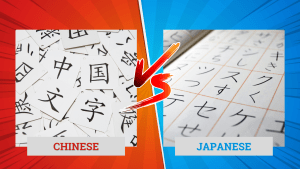Chinese dialects play a significant role in shaping the social fabric and personal identities of Chinese diaspora across the globe. Yet as modern societies evolve the relevance of these dialects is undergoing crucial changes.
For those interested in understanding more about specific Chinese dialects and dialect group identity, this article explores Hokkien, Teochew, Cantonese, Hakka and Hainanese. This is done through the lens of Singapore, a country which due to its diverse multicultural mix of Chinese communities represents a fascinating case study in linguistic diversity.
Historical Significance of Chinese Dialects
The Role of Dialects
Dialects are regional or social variations of a language, featuring distinct vocabulary, pronunciation, and grammar.
Experts believe they exist and evolve as a result of complex interactions between geographical, social, historical, and cultural factors. Each of these influences and shapes the way common language is used and transmitted across generations, leading to diverse variations of a language.
In today’s globalized world, these distinct dialects play an important role in preserving cultural identity, social ties and shared history within a country’s linguistic landscape.
Why are there so many Chinese dialects?
There are several key factors that contribute to the abundance of dialects in China:
Geographical Diversity: Mountain ranges, rivers, and other natural barriers across China’s vast and varied landscape have historically isolated communities, allowing distinct linguistic features to evolve independently.
Historical Factors: China’s long history and complex political landscape have led to the spread and evolution of various linguistic groups.
Cultural Interactions: Interactions between different ethnic groups within China and contact with foreign cultures have enriched Chinese dialects.
Population Size and Distribution: With over 1.3 billion speakers of Chinese languages, the sheer number of people contributes to linguistic diversity.
Can Chinese speakers of different dialects understand each other?
It’s worth noting that many Chinese “dialects” are arguably separate languages and have limited mutual intelligibility. The differences between some dialects have been compared to those between two distinct foreign languages, such as English and Dutch.
A Historical Background of Chinese Dialects in Singapore
Settlers arrived from mainland China into Singapore even before 1819. Large numbers came after Sir Stamford Raffles established British rule, driven by labor demands in various sectors. Many of these immigrants, known as coolies, originated from Southern Chinese provinces like Fujian, Guangdong, and Hainan.
The pursuit of economic opportunities and escaping poverty or conflicts prompted this migration. These immigrants, called “Sinkeh,” predominantly spoke Hoklo (Hokkien), Teochew, Cantonese, and Hainanese. Hokkiens, who were among the early arrivals, played significant roles in trade, even monopolizing mid-19th-century commerce. Subsequent migrants further enriched Singapore’s multicultural tapestry with their varied trades and skills.
Summary Table of Prominent Dialects in Singapore:
| Dialect | Original Region (Province) | Common Use in Singapore |
| Hokkien | Fujian Province | Everyday conversation, media |
| Cantonese | Guangdong Province | Media, business interactions |
| Teochew | Eastern Guangdong Province | Family gatherings, markets |
| Hakka | Southern China (Guangdong, Fujian, Jiangxi) | Family communication, cultural events |
| Hainanese | Hainan Province | Family settings, food industry |
The Major Chinese Dialects
Despite government efforts to promote Mandarin, various Chinese dialects persist in Singapore, especially among the older generations. These dialects remain a vital part of the Chinese Singaporean community’s cultural and social fabric.
1. Hokkien
Hokkien is the most widely spoken Chinese dialect in Singapore, used by nearly half of the residents who speak dialects at home. Historically, it functioned as the lingua franca among local Chinese communities and was prominent in business until the 1980s. While usage among younger generations is waning, older adults still use Hokkien in everyday conversations and informal business settings.
How to say hello and other common phrases in Hokkien
| Hokkien Phrase | Pronunciation | English Meaning |
| 汝好 | Lí hó | Hello |
| 食飽未? | Chia̍h pá boeh? | Have you eaten? (Used as a greeting) |
| 拜託 | Pài-thok | Please |
| 勞力 | Ló·-la̍t | Thank you |
| 我聽無 | Goá thiaⁿ bô | I don’t understand |
2. Teochews
Accounting for about 20% of the Chinese population in Singapore, the Teochews originate from the Chaozhou prefecture in Guangdong province. They were historically involved in the gambier and pepper industries, with many settling in northern parts of Singapore like Punggol and Sembawang. Although less common in modern business, some still use Teochew within family businesses and specific cultural contexts.
How to say hello and other common phrases in Teochew
| Teochew Phrase | Pronunciation | English Meaning |
| 汝好 | Lṳ́ hó | Hello |
| 汝食饱无? | Lṳ́ chia̍h páu bô? | Have you eaten? (Used as a greeting) |
| 多謝 | To siā | Thank you |
| 再见 | Cái kìⁿ | Goodbye |
| 對唔住 | Tùi m̄ cṳ́ | Excuse me / Sorry |
| 我無知 | Uá m̄ cai | I don’t know |
3. Cantonese
Approximately 15% of Singapore’s Chinese population speaks Cantonese dialects. Cantonese is a dialect originating from Guangdong province. Cantonese settlers initially established themselves in areas like Kreta Ayer and engaged in trades such as carpentry, mechanics, and medicine. Despite limited modern business use, it features prominently in media and pop culture, linking Singaporean Cantonese to their counterparts in Hong Kong.
How to say hello and other common phrases in Cantonese
| Cantonese Phrase | Pronunciation | English Meaning |
| 你好 | Néih hóu | Hello |
| 食咗飯未呀? | Sihk jó faahn meih a? | Have you eaten? (Used as a greeting) |
| 唔該 | M̀h gōi | Please / Thank you (for a service) |
| 多謝 | Dō jeh | Thank you (for a gift) |
| 再見 | Jōi gin | Goodbye |
| 我唔明 | Ngóh m̀h mìhng | I don’t understand |
4. Hakkas
The Hakkas, or the ‘guest family,’ make up about 8% of Singapore’s Chinese population, with origins in Guangdong and Fujian provinces. They primarily settled in areas like South and North Bridge Road, engaging in trades like carpentry and blacksmithing. While not as commonly used in business today, Hakka retains its cultural significance and is still spoken within the community.
How to say hello and other common phrases in Hakka
| Hakka Phrase | Pronunciation | English Meaning |
| 你好 | Ńgì hó | Hello |
| 你食飯未? | Ńgì sṳ̍t fàn mì? | Have you eaten? (Used as a greeting) |
| 多謝 | Dō ciá | Thank you |
| 毋使客氣 | M̀ sṳ́ hak khi | You’re welcome |
| 再見 | Coi kièn | Goodbye |
| 聽毋識 | Ngài tāng m̀ sṳt | I don’t understand |
5. Hainanese
The Hainanese, the fifth-largest dialect group, constitute 6.69% of the Chinese population in Singapore. Originating from Hainan Island, many early immigrants worked in the food and beverage industry, establishing a reputation for culinary skills. Their dialect, though less widespread, is upheld within Hainanese families and businesses focused on hospitality.
How to say hello and other common phrases in Hainanese
| Hainanese Phrase | Pronunciation | English Meaning |
| 汝好 | Lú hó | Hello |
| 汝食飽無? | Lú chia̍h páu bô? | Have you eaten? (Used as a greeting) |
| 多謝 | Tō siā | Thank you |
| 唔駛客氣 | M̄ sái kheh-khì | You’re welcome |
| 再見 | Chài kìⁿ | Goodbye |
| 我無知 | Uá bô chai | I don’t know |
Current Trends Affecting Chinese Dialects
The landscape of Chinese dialects in Singapore has witnessed significant changes over the decades. While the early 1980s showcased a robust use of dialects among native speakers, current trends indicate a stark decline. Government policies and societal shifts are primary contributors, influencing dialect preservation and the overall numbers of dialect speakers.
The influence of Mandarin on Dialect Usage
In 1979 Singapore’s former Prime Minister, Lee Kuan Yew, promoted Mandarin Chinese as the national language over other dialects to foster national unity and ease communication within the Chinese community.
Despite these language policies, dialects remain part of pop culture and are frequently used in media like Lianhe Zaobao. As Singapore moves forward, bilingual education policies aim to bridge the language barrier between dialects and Mandarin, ensuring students maintain a connection to their linguistic heritage.
Erosion of Dialect Identity
The percentage of Singapore’s Chinese residents who speak a dialect in daily life has plummeted from 81.4% in 1980 to a mere 11.8% in 2020. The aforementioned 1979 Speak Mandarin Campaign, initiated to unify various Chinese dialect groups around a single national language, played a pivotal role in this decline. Although many residents had an emotional attachment to their dialects, younger generations now tend to prioritize national identity over regional dialect heritage.
The initial resistance to the policy of using hanyu pinyin for Chinese student names in 1981, and its temporary reversal in 1992, underscores the tension between modernizing language practices and preserving dialect group identity.
Preservation Efforts
Amidst the decline, a dedicated minority in Singapore is fervently working to preserve Chinese dialects.
Initiatives like the Raffles Dialects interest group promote dialect learning on campuses and in community libraries. While public perception may not favor dialect use, Chinese Singaporeans often value them in family and community settings. Despite limited formal support, dialect preservation advocates continue to promote activities to engage and nurture dialect proficiency among youth.
The Role of Technology in Dialect Preservation
Technology is emerging as a crucial tool in the preservation of Chinese culture especially in the context of linguistics. Virtual events, including the Teochew Festival, captivate younger audiences and maintain cultural links through digital engagement. This growing trend of online dialect classes indicates a burgeoning interest among younger generations to access and learn dialects, reflecting an increased appreciation of cultural heritage fostered by digital media.
Language Learning Resources For Understanding Chinese Dialects
Learning Chinese dialects in Singapore is increasingly popular as a means of preserving cultural heritage. Platforms like Learn Dialect offer lessons in Hokkien, Cantonese, and Teochew, aiming to bridge cultural gaps among younger generations.
For additional learning resources, consider engaging with pop culture that uses these dialects, such as movies and music from Hong Kong and Chinese Singaporeans. Language apps and online platforms could also provide interactive options for learners.
Meanwhile, the Lianhe Zaobao newspaper is an excellent resource for understanding written Chinese characters, which can deepen comprehension of Chinese languages overall.
These resources support bilingual education initiatives and ensure that dialect learning complements the official language, Mandarin Chinese, promoting a well-rounded linguistic capability that encompasses the rich diversity of the Chinese provinces and cultures represented in Singapore.





